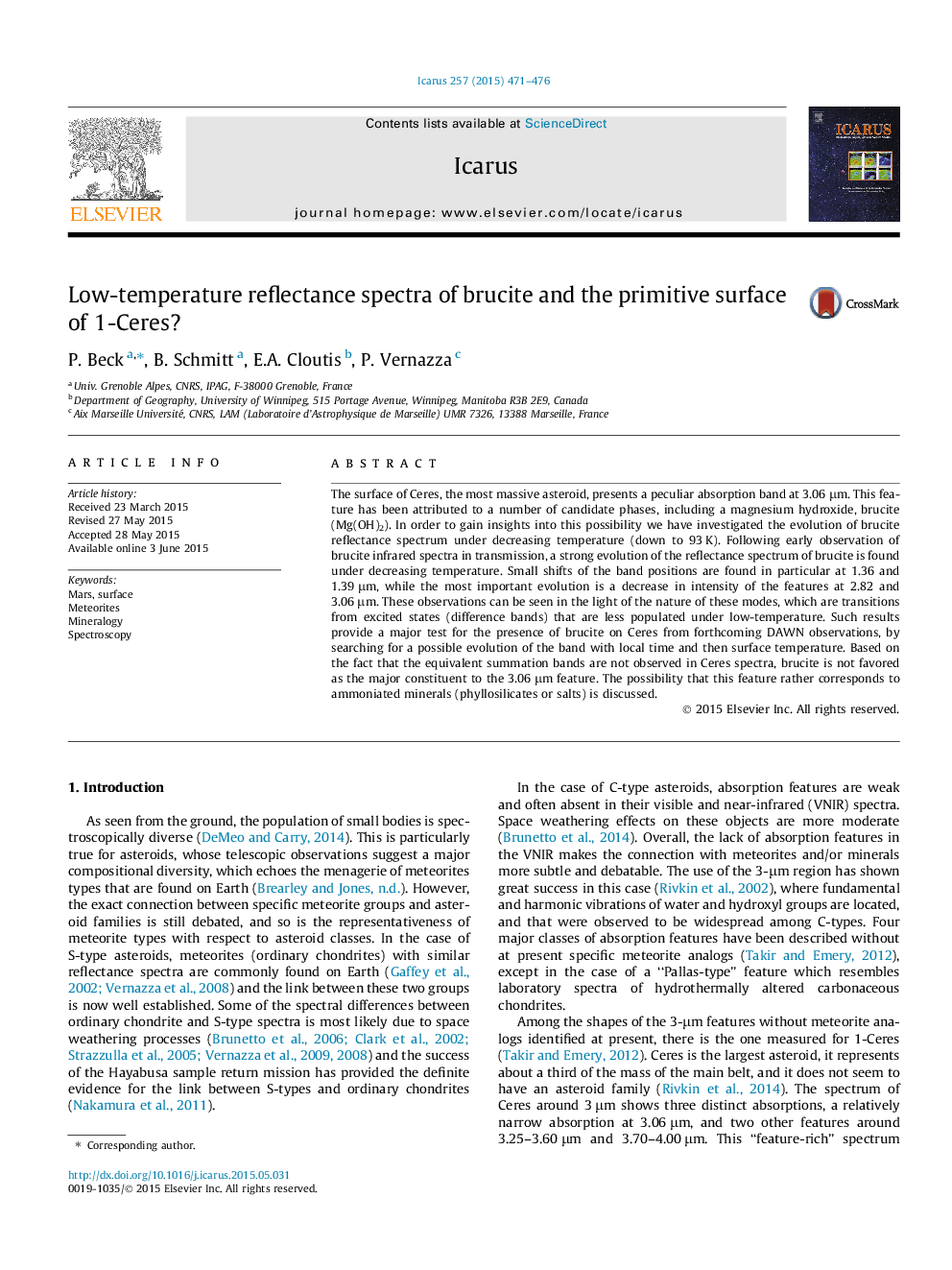| کد مقاله | کد نشریه | سال انتشار | مقاله انگلیسی | نسخه تمام متن |
|---|---|---|---|---|
| 8136248 | 1523533 | 2015 | 6 صفحه PDF | دانلود رایگان |
عنوان انگلیسی مقاله ISI
Low-temperature reflectance spectra of brucite and the primitive surface of 1-Ceres?
ترجمه فارسی عنوان
طیف های بازتابی دمای پایین بروسیت و سطح ابتدایی 1-سرس؟
دانلود مقاله + سفارش ترجمه
دانلود مقاله ISI انگلیسی
رایگان برای ایرانیان
کلمات کلیدی
مریخ، سطح، شهاب سنگها، کانی شناسی، طیف سنجی،
موضوعات مرتبط
مهندسی و علوم پایه
علوم زمین و سیارات
علوم فضا و نجوم
چکیده انگلیسی
The surface of Ceres, the most massive asteroid, presents a peculiar absorption band at 3.06 μm. This feature has been attributed to a number of candidate phases, including a magnesium hydroxide, brucite (Mg(OH)2). In order to gain insights into this possibility we have investigated the evolution of brucite reflectance spectrum under decreasing temperature (down to 93 K). Following early observation of brucite infrared spectra in transmission, a strong evolution of the reflectance spectrum of brucite is found under decreasing temperature. Small shifts of the band positions are found in particular at 1.36 and 1.39 μm, while the most important evolution is a decrease in intensity of the features at 2.82 and 3.06 μm. These observations can be seen in the light of the nature of these modes, which are transitions from excited states (difference bands) that are less populated under low-temperature. Such results provide a major test for the presence of brucite on Ceres from forthcoming DAWN observations, by searching for a possible evolution of the band with local time and then surface temperature. Based on the fact that the equivalent summation bands are not observed in Ceres spectra, brucite is not favored as the major constituent to the 3.06 μm feature. The possibility that this feature rather corresponds to ammoniated minerals (phyllosilicates or salts) is discussed.
ناشر
Database: Elsevier - ScienceDirect (ساینس دایرکت)
Journal: Icarus - Volume 257, 1 September 2015, Pages 471-476
Journal: Icarus - Volume 257, 1 September 2015, Pages 471-476
نویسندگان
P. Beck, B. Schmitt, E.A. Cloutis, P. Vernazza,
